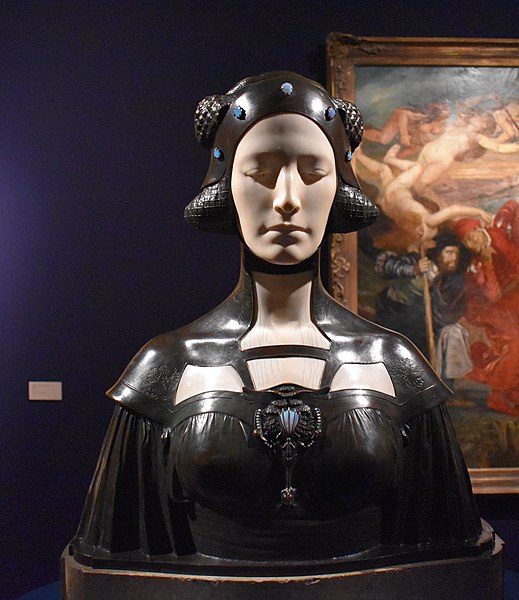Sir George James Frampton, was a British sculptor. He was a leading member of the New Sculpture movement in his early career when he created sculptures with elements of Art Nouveau and Symbolism, often combining various materials such as marble and bronze in a single piece. While his later works were more traditional in style, Frampton had a prolific career in which he created many notable public monuments, including several statues of Queen Victoria and later, after World War I, a number of war memorials. These included the Edith Cavell Memorial in London, which, along with the Peter Pan statue in Kensington Gardens are possibly Frampton's best known works.
Portrait of Frampton by W. H. Latham
Lamia (1899–1900)
St Mungo as the Patron of Art and Music, Kelvingrove Art Gallery and Museum
Peter Pan statue in Kensington Gardens, London
New Sculpture was a movement in late 19th-century British sculpture with an emphasis on naturalistic poses and spiritual subjects. The movement was characterised by the production of free-standing statues and statuettes of 'ideal' figures from poetry or mythology. These figures were usually in bronze but a mixture of materials, such as ivory and gem stones, to give a polychromic effect, were also used. "New Sculpture" is most closely associated with the period from 1880 to 1910, although some artists continued to work in the style much further into the 20th-century.
Alfred Gilbert's Shaftesbury Memorial Fountain in Piccadilly Circus, London, is one of the best-known examples of the New Sculpture.





